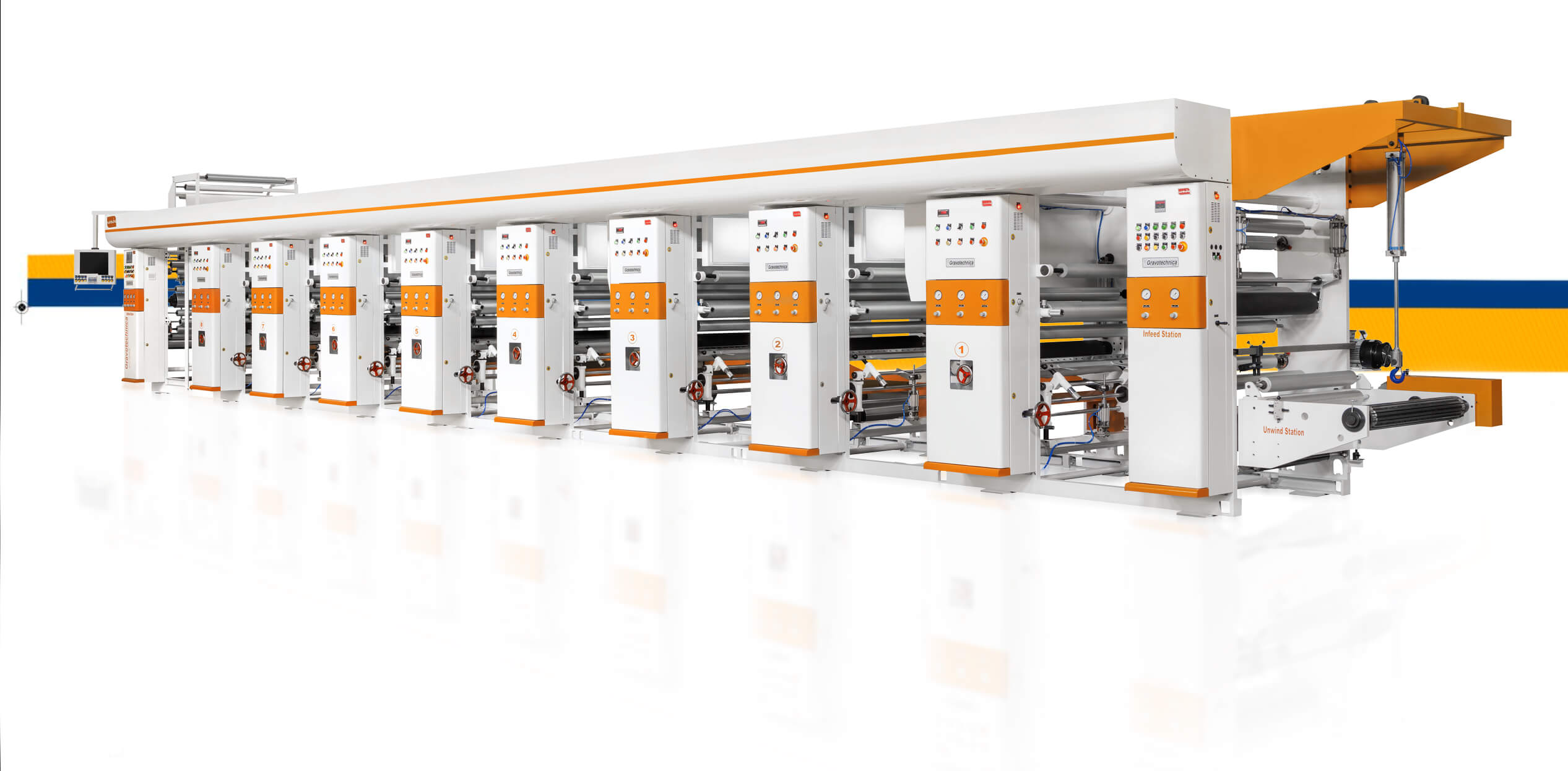ROTOGRAVURE PRINTING PROCESS
Introduction
Continuously running roll-to-roll (R2R) gravure printing technology is receiving much attention these days due to its well-known cost competitiveness. With this attractive feature, this mass production method is being applied to the printing of various types of electronic elements such as radio frequency identification (RFID) tags, flexible displays, biomaterials and miniaturized fuel cells of the next generation. However, to be effectively applied in a wide range of printed electronics, its reliability and printing speed need to be further improved. Thus, much effort is being made in devising better ways of enhancing the reliability in each process of the R2R printing system. Among several technical issues, understanding of ink transfer process (i.e. delivering the ink from the target image engraved on the surface of a printing roll to the tensioned web) plays a significant role for the improvement of both printing quality and the cost.
As a roller is continuously operated, the ink-containing cavities are partially emptied with only a fraction of ink being delivered to the web. As a consequence, both the reliability of printing and the life time of the roll are significantly deteriorated. Unfortunately, fluid dynamics parameters complicate any attempt for the physical understanding of the ink transfer process.
Effect of viscosity
Due to temperature dependence, changes of viscosity during R2R process may not be negligible. However, typical R2R process for printed electronics is carried out at normal temperature (20-25o C), thus the variation of viscosity was assumed to be insignificant, as a first step of the analysis. Moreover, viscosity is likely to depend on velocity and shear rate but the web moving velocity is relatively low (i.e., 0.1m/s) and the change of viscosity was also assumed to be negligible. As the viscosity increases, it was apparent that more ink was transferred to the web, as shown in the volume fraction of the ink. In addition, the amount of ink remaining in the cavity decreased and the thickness of the ink column attached to the web increased simultaneously as the viscosity increased.
Effect of surface tension
As the size of geometry becomes smaller, the role of the surface tension increases. Thus, several changes in surface tension were attempted. The below figure clearly represents that surface tension also plays a significant role in ink transfer. The amount of the ink transferred increased as the surface tension coefficient decreased. It may be necessary to investigate the effect of the capillary number which represents the ratio of viscosity and surface tension.
Effect of contact angle
To determine the effect of the hydrophilic and hydro phobic characteristics of the web, simulations with different contact angles between the web and ink were implemented. In general, the smaller contact angle brings about improved amount of the ink to the web when the substrate has a hydrophilic property. As shown in the below figure, the amount of transferred ink gets increased as the contact angle became smaller. However, the contact angle appears to play a less significant role than the viscosity.
INK TRANSFER MECHANISM IN ROLL TO ROLL APPLICATION IN GRAVURE

Operational tools and equipments uses in Flexo Printing:
1. Impression Cylinder: It supplies pressure to plate cylinder so that printing image will be transferred to the substrate of the printing press.
2. Doctor Blade: Nowadays it is made of polymer materials with variety of edges and fragments the anilox roll to confirm that ink amount available in the engraved cells only delivered. There is also availability of printing press uses doctor blade of steel material.
3. Ink Fountain / Printing Inks: Solvent based inks, electron beam curing inks, ultraviolet curing inks, chemically curing inks, water inks. It is controlled by the inking unit may be fountain roll unit or doctor blade sometime.
4. Gravure Cylinder: Gravure cylinders are made of copper plated steel or aluminum that is engraved or etched and then chromed. A rotogravure printing press has one printing unit for each color, typically CMYK or cyan, magenta, yellow and key (printing terminology for black). The number of units varies depending on what colors are required to produce the final image. The circumference can change according to the layout of the job.
Process / Working Principle:
There are five basic components in each color unit: an engraved cylinder (AKA “Gravure cylinder”) (whose circumference can change according to the layout of the job), an ink fountain, a doctor blade, an impression roller, and a dryer. While the press is in operation, the engraved cylinder is partially immersed in the ink fountain, filling the recessed cells. As the cylinder rotates, it draws ink out of the fountain with it. Acting as a squeegee, the doctor blade scrapes the cylinder before it makes contact with the paper, removing ink from the non-printing (non-recessed) areas. Next, the paper gets sandwiched between the impression roller and the gravure cylinder. This is where the ink gets transferred from the recessed cells to the paper. The purpose of the impression roller is to apply force, pressing the paper onto the gravure cylinder, ensuring even and maximum coverage of the ink. Then the paper goes through a dryer because it must be completely dry before going through the next color unit and absorbing another coat of ink.

